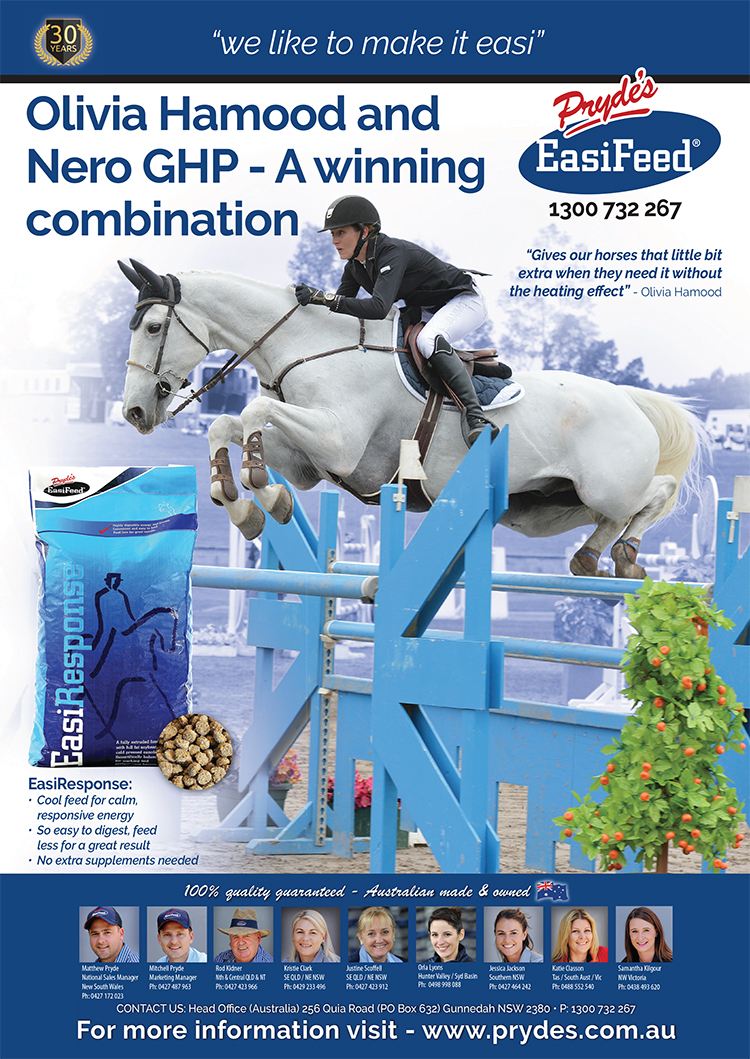In part two, we concentrated on a ‘getting to know you’ session for Winsome and her young rider, Laura Rowe. This time it’s Winnie’s turn in the spotlight, as a trainer, Michelle Strapp refines her showjumping technique.
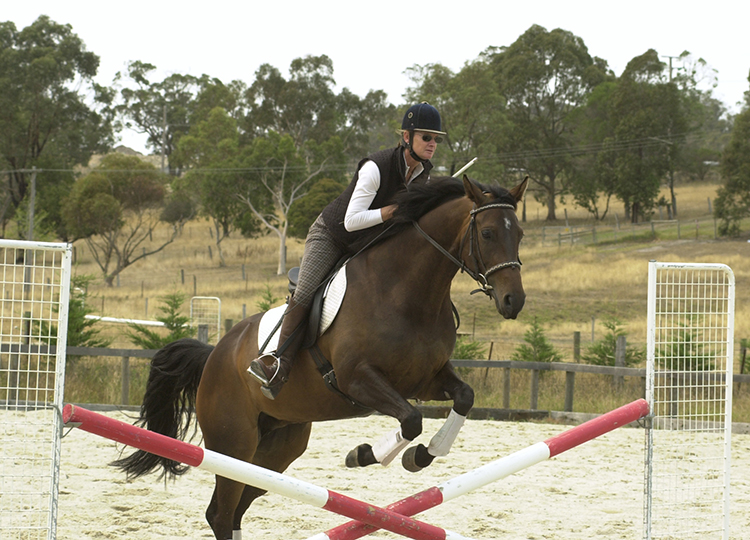
As explained in the first of this series, while Winsome had a basic (very basic) dressage education, this jumping thing was totally new, and much of Michelle’s early work concentrated on teaching her what all those poles were about…
“With green horses, often the challenge is just to get from one side of the jump to the other. I had Winnie for a week when Laura went away, and what I just did was jump her each day, for a short time, until she understood that she was actually getting from A to B via the jump.”
“The problem is she has too fine a line between hand and leg to a fence, she’d come round a corner, cantering to a fence, and you would just sit for a second, and she would go back to trot, and you’ve lost your rhythm to the fence. For a younger rider, it is important that the horse actually takes them to the fence, so they can sit against the canter if they have some doubt, but the horse still keeps cantering to the fence.”
“A lot of the time, a green horse doesn’t even see the fence. They are looking at the trees, or a car going by, a piece of grass – so as you canter to the fence you know there is a good chance that they are not going to leave the ground, they might walk through it! When we had her for that week our whole concept was to give her the idea that when she turns to a fence, she is going to jump it, she is not going to go round it – she must watch the top rail.”
Since then, Winsome had been back at her new home with Laura, where she discovered something much more exciting than jumping poles – jumping KANGAROOS! So amazing were these animals that Winnie, who has always been somewhat plump, actually went off her feed and fined down a little. She looked great when she came back to another jumping session with Michelle.
“She hasn’t jumped now for three or four days so it will be interesting to see what happens. She might just flop over and not watch the top rail at all, or she might actually remember jumping, that she’s had a few rubs, and be a little more on the job. You see a very good horse – they just don’t take their eye off the rail. Careful horses never take their eye off the rail, other horses look through it. What I found in that week I had her, was that we got a reaction when she had a rail down, sometimes quite a big reaction and I thought, wow, this horse can seriously jump – but the good part, considering the job this horse has to do for Laura, was that after three or four fences, that started to wear off and she said, I’m quite happy to do what I have to do. She’s really quite a conservative jumper. Good with the legs, but conservative, which is very important for a junior because if you have a horse that is too careful and you make mistakes, they are unforgiving.”
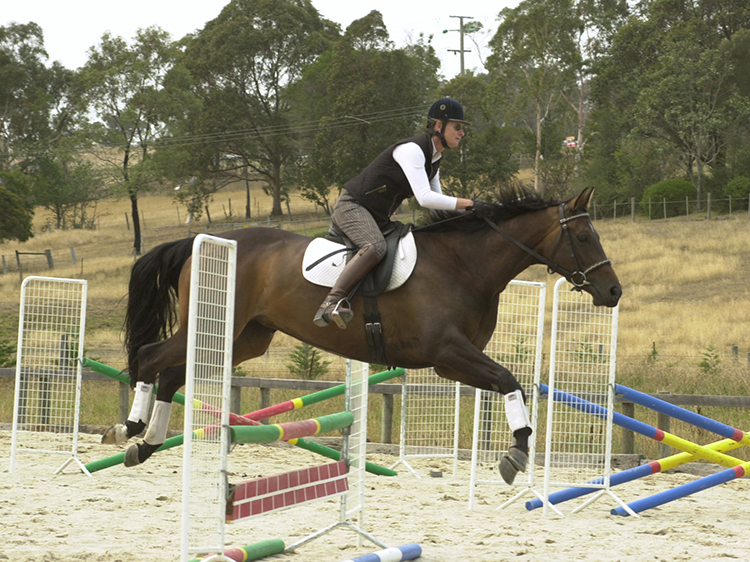
“It will be interesting to see how wobbly she is today, and how she travels down to the fence. Laura has been riding her so well, I can send her to home for three or four days, and she is not back being crooked – Laura is doing a very good job with her.”
And Winnie doesn’t just canter to her jump, she feels really good when she lands – but that doesn’t worry Michelle:
“If they want to play on landing, it means they are having a good time and as long as it is not being ridiculous, as long as they are not putting in huge pig roots, then it is best not to over react. If they are landing and just want to play, and you over-react, and grab them as soon as they land to stop them doing that, you affect the jump in mid-air. They are going to be waiting and anticipating that you will grab, and then you create a tightness. Just ride forward through the play. That’s one of the things about schooling a horse, bringing out its natural exuberance while still keeping it obedient, not crushing the horse.”





It was noticeable how Winnie’s canter had improved, and she was holding a lovely counter canter through the corners.
“She is getting a lot better balanced, a lot straighter, and counter canter is a great exercise to strengthen the gait because they use muscles in counter canter they don’t use in normal canter.
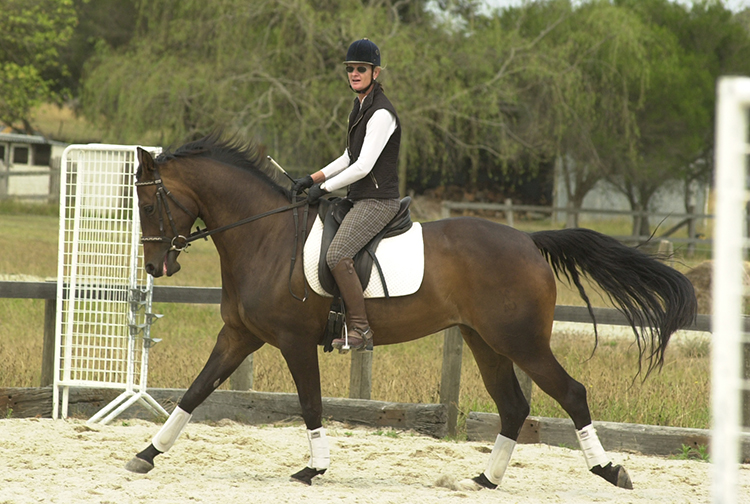
I like horses counter cantering in jumping lessons quite early. It’s not just strengthening, it’s a test of obedience too – you are keeping them in the ‘chute’. George Morris made us jump five-foot courses in counter canter for precisely that reason, it was difficult because all these automatic horses were hot to do flying changes, it was hard to keep them between your legs – discipline. Obviously, flying changes become very easy once you can do that.”
Having jumped the trot rail and the little fence once, Michelle lengthens the distance just a tad:
“The distance was a very steady six. She is actually starting to show a little more exuberance on landing. Before she landed and landed dead. Now she is starting to jump the cross rail and carry herself forward. You’ve got to remember that your first landing stride is your first stride to the next fence. Because she is landing and taking rein, and travelling from behind, then with this young horse, you don’t want to make that a negative. Her problem is that she doesn’t travel enough to her fences, she’s too fine between hand and leg, she’d much rather do six tiny strides than float down in five. So I just altered the distance a little to allow me to land and travel forward.”
“When you are on a young horse and you feel two strides out that it is not watching the fence, it is very tempting to do the old Australian quick jerk off the ground. The rider goes – WATCH the fence – and the horse goes hollow. I jumped a horse for someone the other day, and I just cantered down to a fence, and the horse walked right through it. It was actually waiting for me to do the quick jerk off the ground.”
“Once I’d jumped six fences then the jump became softer and bigger because he actually started to watch the front rail itself. That’s why some of the professional riders like to get those good junior riders to sit on their horses, they don’t have a lot of timing but they are very good at holding a rhythm, and staying in balance. You can get them to sit on your young horses really nicely and they don’t complicate it, they just canter down in a beautiful balance, they let the horse think about whether it is a little bit long or a little bit short, they might cluck a bit or a little whoa, but they don’t start doing the jerks to get them off the ground. That’s one of the hardest things with green horses – just sitting there when there is always the chance that they don’t take off, and they crawl along on their knees for a while, which is fun!!!”
Time to test whether Winnie was keeping her wits about her…
“Now we have put the fence up a bit, and I’m going to canter to the fence exactly the same way. We haven’t put it up a lot, but it is enough for a young horse to be caught. We just want to keep the canter uncomplicated, she is to watch the front rail and we want to see if she gives it a bit of a rub, or whether she tries a bit harder. And then come back and see what the reaction is the next time.”
“If you are looking for the superstar, you don’t mind if this reaction is a little backed off and very elevated. That might happen after she has worn the rail, but your superstar might stay elevated for the whole session. But because I’ve worked her before, I’m confident she’ll come back to how she jumped it the first time – and that’s what she needs for a junior for equitation.”
She jumped the little fence with style, in good form, and the canter is looking wonderful…
“Yes she is starting to get really buoyant, to free up. I’ll jump the double now. With a young horse, the first time they jump a double they tend to jump the first bit and then not know where to go after that.”
“You’ve got to keep them in the chute. It’s most important in a double for a young horse to land and take the bridle forward. What a lot of horses do – like the one I rode the other day – is land, and jam their neck up at you. What the rider has done is tried to keep the horse in the chute by hanging on to their mouth through the double, and of course the horse learns to put its neck back at you, it’s a really awful feeling even when the horse does jump. The most important thing is that I can keep a feel of the mouth, but allow my hand to float through the double to encourage her to take the rein, open her stride and give her the freedom of her back. That’s why the canter is getting bouncier because she is getting freer.”
“Horses always have a tendency to run one way or the other. It’s very minor now but she has that tendency to run to the right of the fence. Remember in our flatwork, which shoulder did she put out? The right one. It’s always the same. When riders come and say their horse is running down the fence one way or the other, generally you will find it on the flat… Horses use that as an evasion, they jump across the fence, instead of having to jump up through the wither and up through the back. But she has a very good attitude and actually has quite a ping.”
“When she started she couldn’t really find the jump, and it was a bit of a flop, and then every now and then, you would get the jump. When they jump enough fences they start to put it together.”
“Because of the job she has got to do, I’m not inclined to jump her over anything too massive at the moment. It’s a matter of getting out and jumping a few spooky fences, not that I think it is going to affect her too much. She just needs to jump a lot of fences the next six months because she has to give Laura confidence, and Laura hasn’t jumped enough fences to be accurate enough to be jumping bigger fences. At the moment Winnie is super confident. I can move her up and take the more forward option, or wait for a second option, and she stays in my hand and confident, very relaxed on landing- that’s part of her flatwork. It really pleases me, I don’t feel I could do any more with her.”
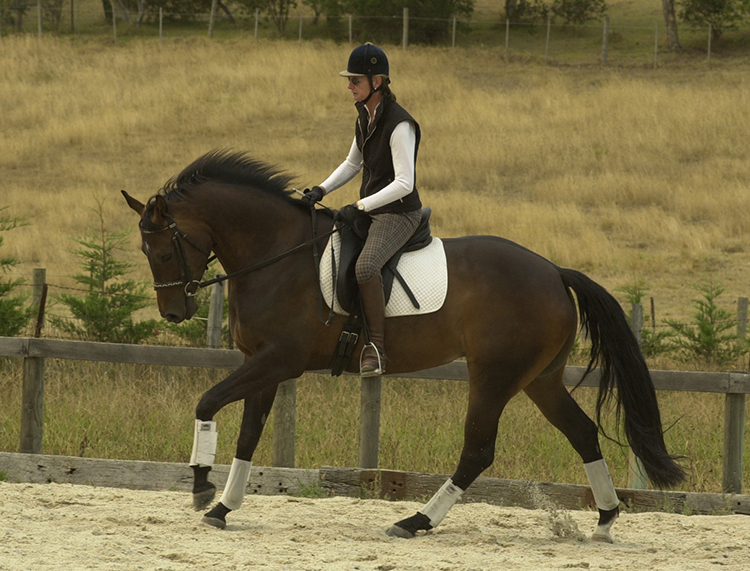
“Her attitude is super, and her rideability, she is just getting freer, she feels more alive in the paces. I think the trot work will just keep on improving.”
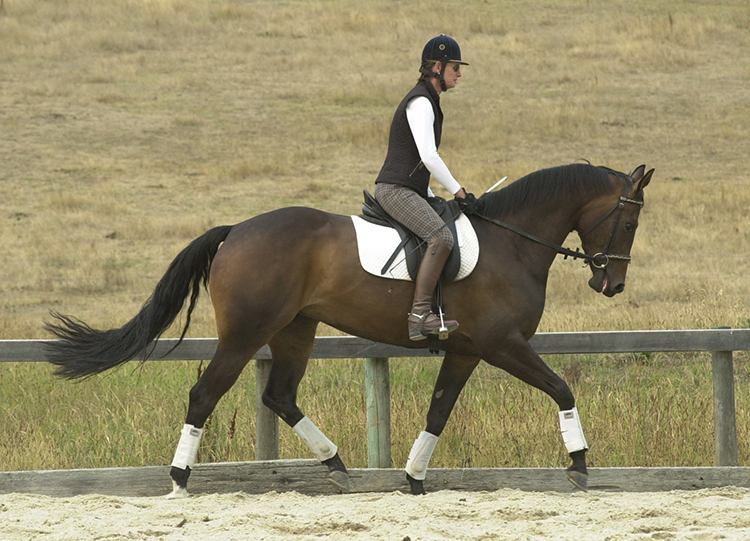
And just to prove that, Michelle shortens the trot just a tad, and Winnie starts to dance…
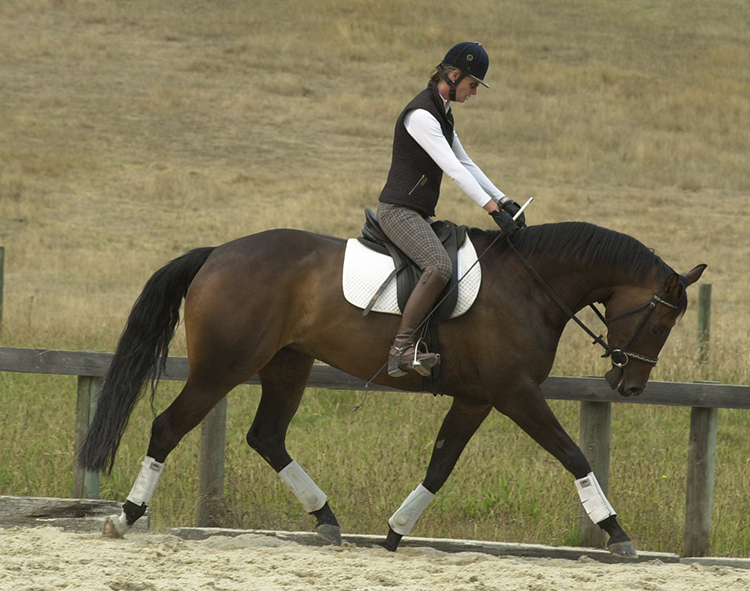
“It doesn’t hurt to do a little baby passage work, it gets her little hocks going, and she does it so well, you can keep her deep and easy – you never get to the stage of clashing aids. I can keep my hands dead still and just activate her hocks – it doesn’t hurt them so long as you are not forcing the deepness and the leg. She is so happy to be deep and it is quite easy to activate her, it feels quite springy, we’ll have to start teaching her passage piaffe. Everything is going great with her, we just have to get through the kangaroos.”



